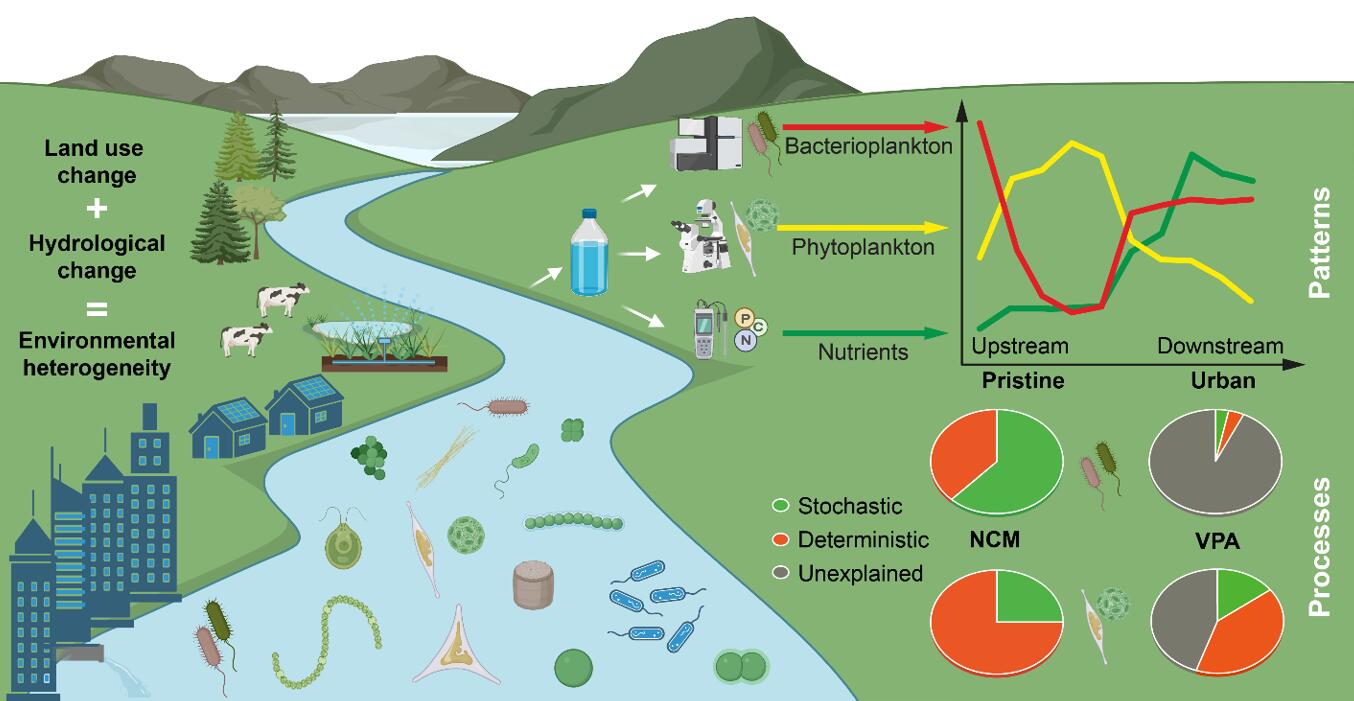Throughout the history, humans have sprung up disproportionately along rivers and have extensively modified riparian zones. Today, many rivers have a long history of human alteration through urbanization. Urbanization has multiple effects on riverine biota among which the plankton that form the base of aquatic food webs.
China’s economic reform and opening up policy has brought about significant changes in the population distribution between urban and rural areas across the country, especially in southeast China. Since 2011, the Aquatic EcoHealth Group at the Institute of Urban Environment, Chinese Academy of Sciences (led by Dr. Jun Yang) has established an Ecological Observation Station in an urbanizing watershed of the Houxi River, the second largest river in Xiamen city, southeast China.
Urbanization normally induces environmental heterogeneity along the river. This exerts a strong selection effect, and counteracts with river connectivity that promotes species dispersal. Therefore, revealing the mechanism of plankton community assembly in urbanizing watersheds is of great significance for understanding and protecting the ecological health and service functions of rivers.
Water samples were collected along the river in both dry and wet seasons for five consecutive years (2012-2016). Bacterioplankton, phytoplankton and water physico-chemical contents were analyzed. The results show that upstream reservoir construction and watershed nutrients loads were the main reasons for the longitudinal environmental heterogeneity. From the upstream pristine habitat to the downstream urban habitat, the plankton community showed significant changes. This spatial difference in community composition was far greater than the seasonal difference. Whereas the diversity of bacterioplankton was the highest in the upstream river section and the lowest in the upstream water source reservoir, the diversity of phytoplankton diversity was the highest in the upstream reservoir and the lowest in the downstream urban reservoir. Further complementary analyses of the variation partitioning analysis (VPA) and the neutral community model (NCM) revealed that the assembly of riverine plankton community was affected by both deterministic and stochastic processes; and phytoplankton communities were more affected by deterministic processes than bacterioplankton. These results reflected a balance between plankton dispersal, river connectivity, and local environmental selection. Considering the global loss of river connectivity due to downstream fragmentation and flow regulation, our findings imply that plankton-based ecological approaches could be useful to hedge against an uncertain future of rivers draining urbanizing watersheds in an ecologically sustainable way.
The study results were published in Limnology and Oceanography, under the title "Riverine bacterioplankton and phytoplankton assembly along an environmental gradient induced by urbanization" .
Dr. Alain Isabwe and Dr. Jun Yang are the first and corresponding authors, respectively. The research was funded by the Strategic Priority Research Program of the Chinese Academy of Sciences, the National Natural Science Foundation of China, and the Natural Science Foundation of Fujian Province of China.

Riverine plankton assembly along an environmental gradient induced by urbanization